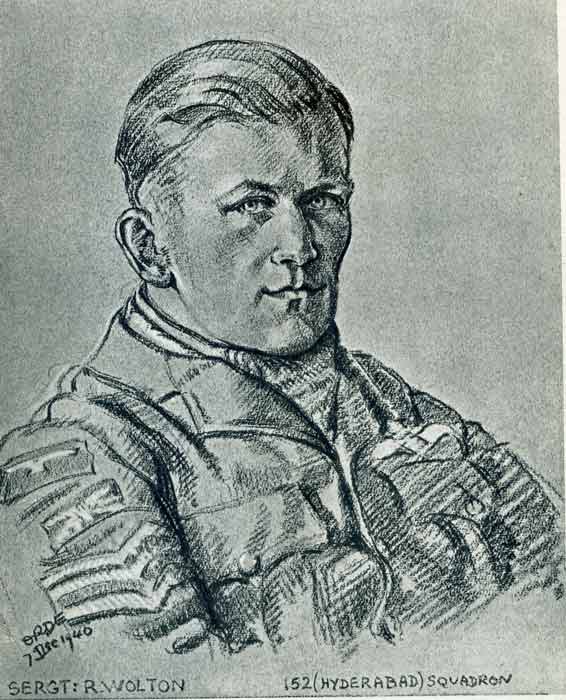The Airmen's Stories - Sgt. R Wolton
Ralph Wolton was born on 26th July 1914 in Rottingdean, Sussex and joined the RAF in July 1932 for ground duties as an Aircrafthand. After recruit training he went to the Torpedo Development Flight at Gosport. After nine months Wolton was sent to No. 1 Electrical and Wireless School at Cranwell for a wireless operator's course, which lasted fourteen months.
After passing out Wolton was posted to 58 Squadron at Worthy Down and became a WOp/Air Gunner. In September 1935 he went to 142 Squadron, which was sent out to Mersa Matruh at the time of the Abyssinian crisis. The squadron returned to the UK but Wolton was posted to 45 Squadron at Helwan, Egypt.
May 2018 - Richard W Wheeler was also born in Rottingdean in 1914 and grew up with Wolton, staying in contact after Wolton enlisted in the RAF. His son, also Richard, has kindly sent photographs taken by his father at this time, they reveal that Wolton was a keen motorcyclist. He continued to race professionally postwar.

Above: Wheeler (left) and Wolton, Rottingdean beach 1935.

Above: RAF Andover 1935.

Above: RAF Manston, late 1930s.

Above: on a very rare Zenith Gradua on the South Downs near Rottingdean, circa 1934.



Above: a Christmas card sent from Egypt in 1936 or 37.
Wolton volunteered for pilot training and after returning to the UK in September 1938, he began his initial training at 9 E&RFTS Ansty. He moved on to 10 FTS Tern Hill, completing his training in October 1939 and joining 152 Squadron, then forming at Acklington.
The squadron moved south to Warmwell on 7th July 1940. On 25th July Wolton shot down a Do17, which crashed and burned out at East Fleet Farm, Dorset. On 15th August Wolton was shot down into the sea off Chesil Beach. He was able to escape from his Spitfire uninjured and swam to a buoy, from where he was picked up.
He claimed a Ju88 destroyed on 26th September. Wolton was thrown out of his aircraft when a wing fell off at 15,000 feet on 11th October. His parachute was damaged and he was unable to open it until he was down to 1,000 feet.
Injuries from these bailouts left him with a lifelong limp.


Above: rare wartime colour images, taken on the South Coast road near Rottingdean, the headlight has a shutter fitted to comply with blackout regulations.
On 16th December 1940 Wolton was sent to CFS Upavon for an instructor's course. He was afterwards posted to 16 FTS Newton, instructing Polish pupils.
Commissioned in March 1941, Wolton moved to 51 OTU Cranfield on 8th April 1942 to instruct on night fighters. He joined 153 Squadron at Ballyhalbert, Northern Ireland on 20th January 1943. After it was disbanded on 13th March he went to 96 Squadron at Honiley.
From 18th May to 6th August 1943 Wolton was attached to 417 Squadron (USAAF) to convert its crews to Beaufighters. He then went to 63 OTU at Honiley until 27th October when he rejoined 96 Squadron, then at Drem. The squadron was disbanded on 17th December 1944 at Odiham and Wolton went to 239 Squadron at West Raynham, flying Mosquitos on radio countermeasures.
Wolton was released from the RAF on 24th July 1946 but he rejoined on 3rd March 1947 for a further eighteen months, finally retiring on 4th September 1948 as a Flight Lieutenant.

Above: with a racing Excelsior in 1947, perhaps at Warminster.

Above: at Warminster circa 1947 with a Rudge and an Excelsior.

Above: at speed on the Excelsior.
His portrait was made by Cuthbert Orde (below).
Wolton died in 1993.

|